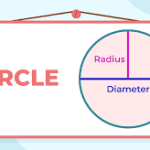To master Spanish ‘-Go’ verbs, understand their Latin roots and conjugation patterns. Verbs like ‘jugar’ and ‘llegar’ follow specific rules. Exceptions exist too, like ‘hacer’ and ‘decir.’ Practice using them daily for fluency. Real-life examples solidify learning. Flashcards and quizzes boost recall. Incorporate ‘-Go’ verbs into conversations. Enhance your Spanish skills by recognizing and using these verbs effectively.
Origins of ‘Go Verbs in Spanish’
Understanding the origins of ‘Go verbs in Spanish can provide valuable insights into their unique conjugation patterns. These verbs, known as ‘Go verbs, have their roots in the Latin language. During the evolution of Latin into Spanish, certain verbs ending in ‘-Go’ retained their distinctive conjugation forms. This historical connection explains why ‘Go verbs stand out in Spanish conjugation charts compared to regular verbs.
When Spanish adopted these verbs from Latin, their conjugation patterns remained somewhat consistent with their Latin origins. The ‘-Go’ ending in these verbs signals a specific conjugation pattern, making them recognizable within the language. By delving into the history of these verbs, you can grasp why they behave differently in Spanish compared to other verb groups.
Common ‘-Go’ Verb Conjugations
When exploring the conjugation of common ‘-Go’ verbs in Spanish, you’ll notice distinct patterns that set them apart from regular verbs. These verbs, such as ‘jugar’ (to play), ‘llegar’ (to arrive), and ‘pagar’ (to pay), follow a unique conjugation pattern in the present tense.
For example, in the present tense, the endings for these verbs are ‘Yo -go,’ ‘Tú -gas,’ ‘Él/Ella/Usted -ga,’ ‘Nosotros/as -gamos,’ ‘Vosotros/as -gáis,’ and ‘Ellos/Ellas/Ustedes -gan.’ This pattern remains consistent across most ‘-Go’ verbs, making it easier to conjugate them once you’ve grasped the pattern.
Additionally, these verbs maintain their regular conjugation in other tenses and moods, such as the preterite, imperfect, future, conditional, and subjunctive. Understanding these common ‘-Go’ verb conjugations will help you communicate more effectively in Spanish, as these verbs are frequently used in everyday conversation.
Practice conjugating verbs like ‘jugar,’ ‘llegar,’ and ‘pagar’ in different tenses to solidify your understanding of their conjugation patterns.
Irregularities and Exceptions
Exploring irregularities and exceptions in Spanish ‘-Go’ verbs reveals unique patterns that deviate from the standard conjugation rules. While most ‘-Go’ verbs follow a predictable pattern, there are some exceptions that require special attention.
One common irregularity is found in verbs like ‘hacer’ (to do/make) and ‘decir’ (to say), where the yo form changes to ‘hago’ and ‘digo’ instead of ‘hago’ and ‘digo’ as expected.
Another irregularity occurs in verbs like ‘tener’ (to have) and ‘venir’ (to come), where the stems change in certain forms, such as ‘tengo’ and ‘vengo’ for the yo form.
Additionally, verbs like ‘salir’ (to leave) and ‘traer’ (to bring) have irregular yo forms ‘salgo’ and ‘traigo’. These irregularities may seem challenging at first, but with practice and exposure to these verbs in context, you can gradually master their conjugations.
Remembering these exceptions will enhance your proficiency and understanding of Spanish ‘-Go’ verbs.
Using ‘-Go’ Verbs in Context
After uncovering the irregularities and exceptions in Spanish ‘-Go’ verbs, applying them in context will deepen your understanding and proficiency in using these verbs effectively.
When you encounter ‘-Go’ verbs in real-life situations, such as in conversations or writing, you can apply your knowledge to communicate more fluently and accurately. For example, using verbs like ‘hacer’ (to do) or ‘salir’ (to leave) in context allows you to express actions with precision.
In a sentence like ‘Hago mi tarea todos los días’ (I do my homework every day), the verb ‘hago’ (do) is essential for conveying the action of completing homework regularly.
Similarly, in a phrase like ‘Ella sale temprano por la mañana’ (She leaves early in the morning), the verb ‘sale’ (leaves) signifies the specific action of departing at a particular time.
Tips for Mastering ‘-Go’ Verbs
To excel in mastering Spanish ‘-Go’ verbs, consistently practice conjugating them in various tenses and forms. This practice will help you become more familiar with the unique conjugation patterns of ‘-Go’ verbs and build your confidence in using them correctly. When practicing, focus on not just memorizing the conjugations but also understanding the context in which each tense and form is used.
Another tip for mastering ‘-Go’ verbs is to create flashcards or a study guide to review regularly. By visually seeing the verbs and their conjugations, you can reinforce your memory and improve your recall when speaking or writing in Spanish. Additionally, try incorporating ‘-Go’ verbs into your daily conversations or writing exercises to practice using them in context.
Lastly, consider seeking out online resources, such as interactive quizzes or grammar guides, to supplement your learning. These resources can provide additional practice opportunities and explanations to deepen your understanding of ‘-Go’ verbs. With consistent practice and a variety of study methods, you’ll soon feel more confident and proficient in using ‘-Go’ verbs in Spanish.
Frequently Asked Questions
Are There Any Common Phrases or Expressions in Spanish That Use ‘-Go’ Verbs?
In Spanish, many common phrases and expressions incorporate ‘-go’ verbs. They add flair to your communication, making your speech more dynamic and engaging. Embrace these phrases to enhance your language skills and express yourself effectively.
How Can I Differentiate Between Regular ‘-Go’ Verbs and Irregular ‘-Go’ Verbs When Conjugating Them?
To differentiate between regular and irregular ‘-go’ verbs when conjugating, pay attention to the stem changes in irregular verbs. Regular verbs follow a consistent pattern, while irregular ones have unique alterations in their stems. Practice will help you master these differences.
Can ‘-Go’ Verbs Be Used in All Tenses and Moods in Spanish?
Yes, ‘-go’ verbs can be used in all tenses and moods in Spanish. Conjugate them following the rules for regular or irregular verbs. Practice makes perfect in mastering these verbs. Keep studying and improving!
Are There Any Regional Variations or Dialect Differences in the Use of ‘-Go’ Verbs in Spanish-Speaking Countries?
Yes, there are regional variations in the use of ‘-go’ verbs among Spanish-speaking countries. Different dialects may alter verb endings or pronunciation. Understanding these nuances can enhance your grasp of the language and cultural diversity.
Do All Spanish Verbs That End in ‘-Go’ Follow the Same Conjugation Patterns and Rules?
Yes, all Spanish verbs ending in ‘-go’ follow the same conjugation patterns and rules. Remember to pay attention to these endings to correctly conjugate verbs like ‘jugar’ or ‘llegar’ in different tenses and moods.
Conclusion
You’ve now learned about the origins, common conjugations, irregularities, and tips for mastering ‘Go’ verbs in Spanish.
With practice and dedication, you can confidently use these verbs in various contexts.
Remember to pay attention to the specific conjugations and exceptions, and immerse yourself in the language to enhance your understanding.
Keep practicing, and soon you’ll be fluent in using ‘-Go’ verbs with ease. ¡Buena suerte!


